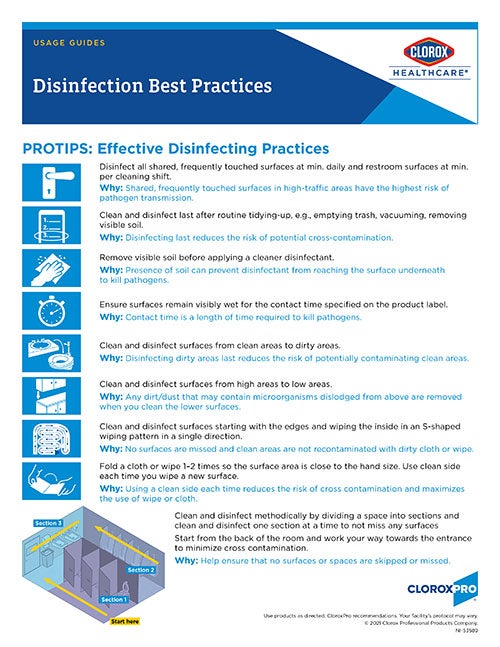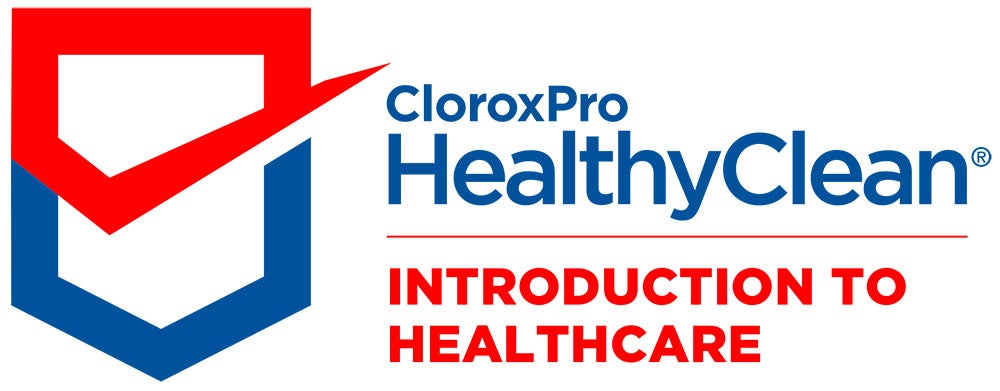Educating & Empowering EVS - Insights from SHEA Spring 2024 Conference

There is nothing like those "aha!" moments when everything clicks and a new understanding emerges. This year's Society for Healthcare Epidemiology of America (SHEA) Spring conference was filled with such moments, where insights were gained, challenges were recognized, and opportunities for growth were highlighted. Among the series of insightful sessions, one theme stood out: the critical importance of training and educating healthcare personnel, especially environmental services staff (EVS), on effective surface disinfection.
Successful Infection Prevention Efforts Rely on Effective Education and Training for EVS
Throughout the conference, speakers and panelists emphasized the importance of ongoing education and practical skills development for EVS. A shared presentation by Drs. Gonzalo Bearman and Rachael Lee, for example, sparked discussions on the necessity of certifications for healthcare epidemiologists, prompting us to question why EVS professionals are often exempt from such standards. Considering EVS play a pivotal role in patient health and wellbeing, ongoing education and training not only seems appropriate, but necessary.
From mastering proper techniques to choosing the right disinfectants, EVS professionals must be skilled and knowledgeable to safeguard patient safety effectively. While it’s easy to get caught up in debates over which disinfectant to use or when to use it, the true cornerstone of effective surface disinfection lies in the how – the meticulous execution of cleaning and disinfection protocols that can mean the difference between success and failure in infection prevention efforts. Below are my three key points to remember as we continue to educate EVS professionals on how to master surface cleaning and disinfection.
3 Key Reminders for Mastering Surface Cleaning and Disinfection
-
A Quick Swipe Won’t Suffice:

- Cleaning and disinfecting go beyond surface wiping; it's about effectiveness and targeting high-touch areas. Elevator buttons, light switches, bedrails, and other high touch surfaces are all breeding grounds for infectious pathogens. EVS personnel must understand the importance of addressing these hotspots and use disinfectants appropriately to ensure surfaces are thoroughly disinfected. When describing the role of environmental cleaning in disrupting the cycle of pathogen transmission, Dr. Matthew Ziegler highlighted the importance of adhering to product contact times and application methods.
- Dr. Ziegler also advocated for staff to use a systematic (versus random) cleaning approach to ensure maximum surface coverage. For example, when cleaning and disinfecting hard surfaces, cleaning should start from the edges and proceed inward, wiping in an S-shaped pattern in one direction. According to Dr. Ziegler and the Centers for Disease Control and Prevention (CDC), cleaning and disinfection should periodically be monitored or assessed to ensure tasks are consistently and correctly performed.1 For further disinfection guidance, CloroxPro offers ProTips for Effective Disinfecting Practices.
-
Choose the Right Disinfectants:

- Not all disinfectants are the same—they differ in terms of pathogen kill claims, application methods, and surface compatibility. Selecting the appropriate disinfectants is critical for patient safety. For example, when targeting specific infectious pathogens like Candida auris (C. auris), use a product with an EPA-approved kill claim for C. auris. You can find a short list of microorganisms that a disinfectant is effective against on the product label and a more comprehensive list on the product’s EPA Master Label.
- In his presentation on the transmission of infectious agents in healthcare, Dr. David Kuhar emphasized the importance of minimizing human error to reduce the risk of infections among patients and staff. While he specifically referenced the use of complicated personal protective equipment (PPE), his message also applies to the use of disinfectant products. Some concerns with dilutable products, for example, include the risk of dilution error and product contamination. However, ready-to-use (RTU) disinfectants can offer efficiency and compliance advantages. With RTU products, no mixing or dilution training is needed, saving EVS time and effort while ensuring proper concentrations are met for optimal efficacy.
-
Continue to Educate, Train, and Improve:

- As noted by several SHEA presenters, cleaning healthcare spaces, like operating rooms and isolation rooms, requires specialized skills that can only be achieved through ongoing education and training. Managers and IPs can also assess cleaning techniques and consider transitioning to RTU EPA-approved disinfectants to simplify training.
- For healthcare-specific cleaning and disinfection insights, CloroxPro offers The CloroxPro HealthyClean® Introduction to Healthcare microlearning certificate module, which is suitable for EVS managers, supervisors, EVS staff and IPs. A HealthyClean Trained Specialist course, accredited by the ANSI National Accreditation Board (ANAB), is also available for frontline EVS.
Be Proactive
Let's continue to recognize the dedication of EVS professionals to patient safety, and promote ongoing training and education to enhance their significant impact on patient and public health. The SHEA Spring Conference highlighted that effective surface disinfection requires more than just knowing which disinfectant to use; it involves understanding how to apply it effectively for optimal results. As Dr. David Weber emphasized at the SHEA Town Hall — Reducing Healthcare Associated Infections, it's "better to be proactive than reactive." By prioritizing comprehensive training and education for EVS professionals, we can empower them to apply disinfection principles with precision and maintain confidence that they are keeping surfaces and spaces clean.
Additional Resources and Information
- Educational Tools & Training Videos: In partnership with Association for the Healthcare Environment (AHE), CloroxPro has developed educational tools and training videos to highlight critical aspects of cleaning and disinfection in the healthcare environment.
- Webinar: Save Money, Save Time, and Disinfect More Efficiently with Ready-to-Use Products
- Blog: Safeguarding Spaces: The Role of EVS in Infection Control
- Blog: Healthcare Habits: Refocusing on the Basics of Environmental Cleaning and Disinfection
- Research article: Applying a multi-faceted infection control strategy to improve hospital environmental cleaning quality**.** https://doi.org/10.1016/j.heliyon.2024.e24928
Share this article
More from the Clorox Pro Blog
References
- Centers for Disease Control and Prevention. Guide to Infection Prevention for Outpatient Settings: Minimum Expectations for Safe Care. http://www.cdc.gov/HAI/settings/outpatient/outpatient-care-guidelines.html.





